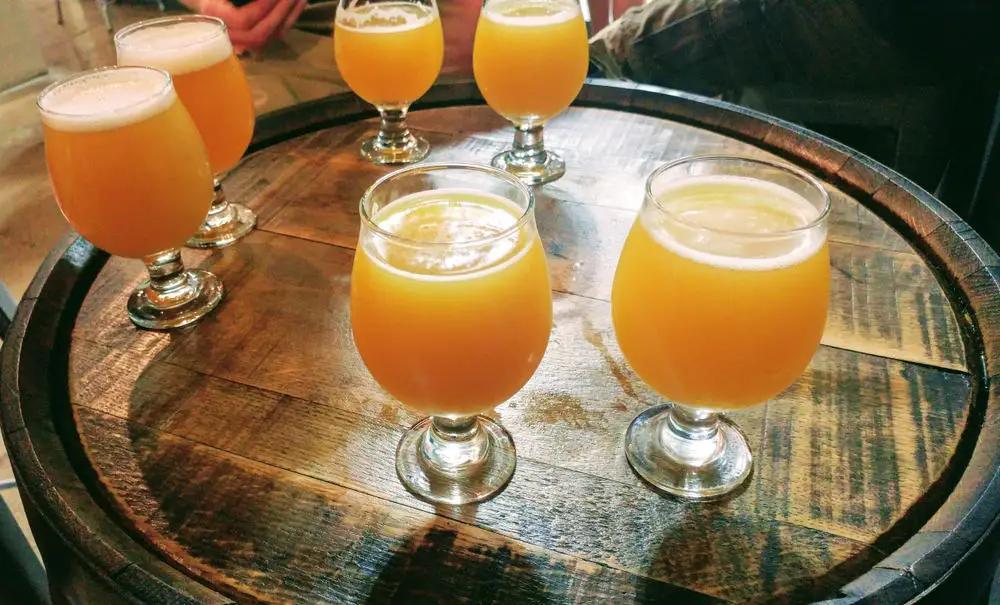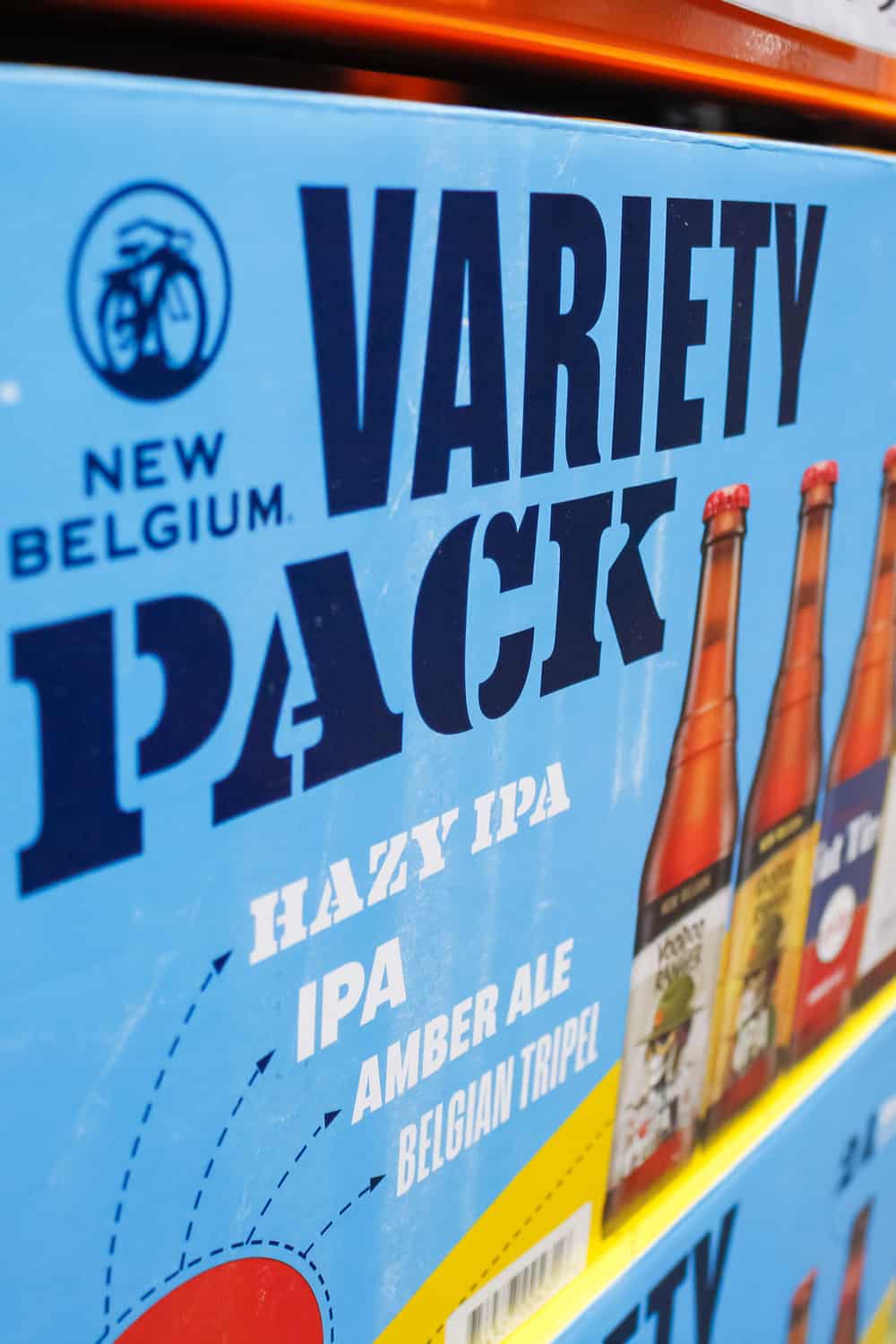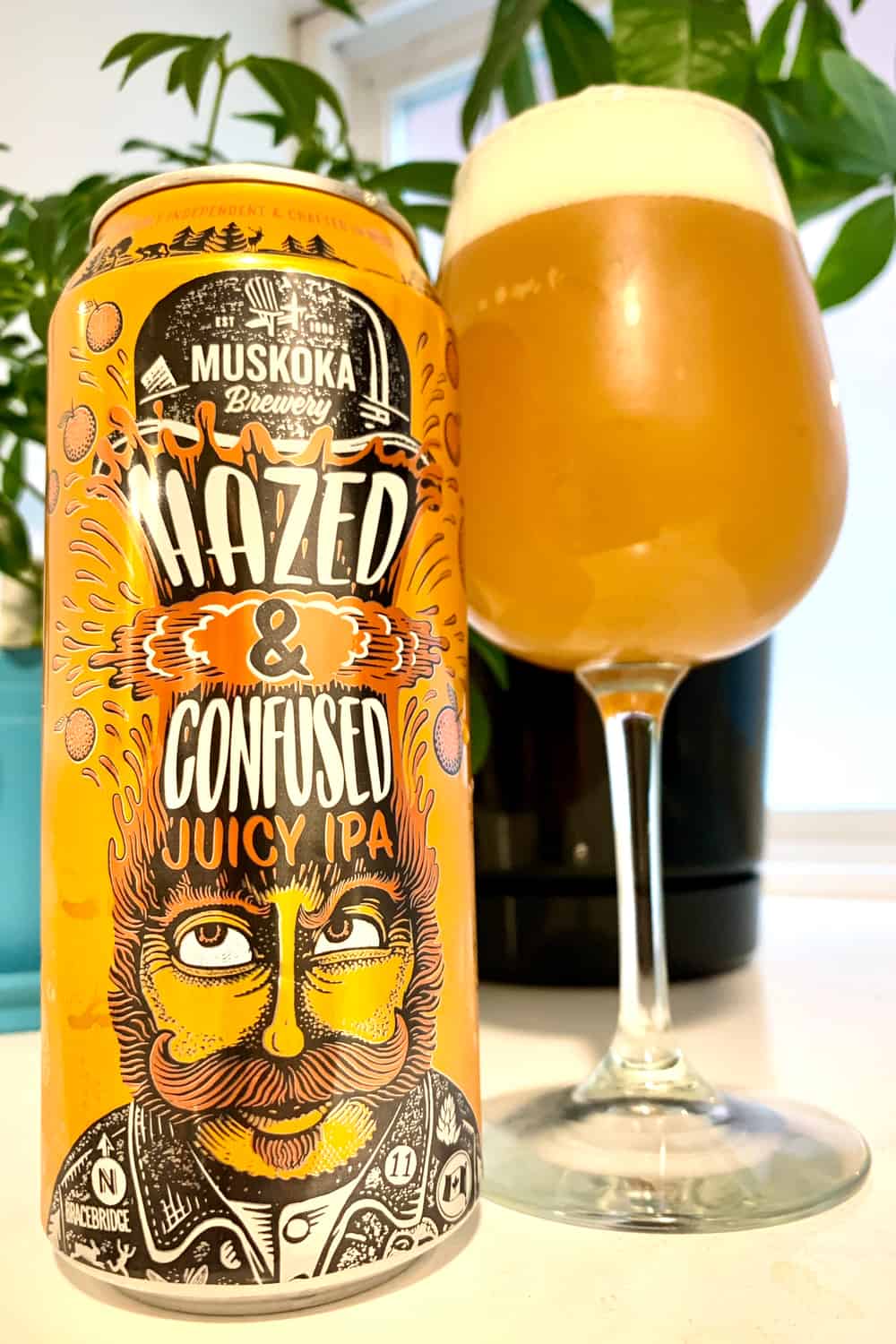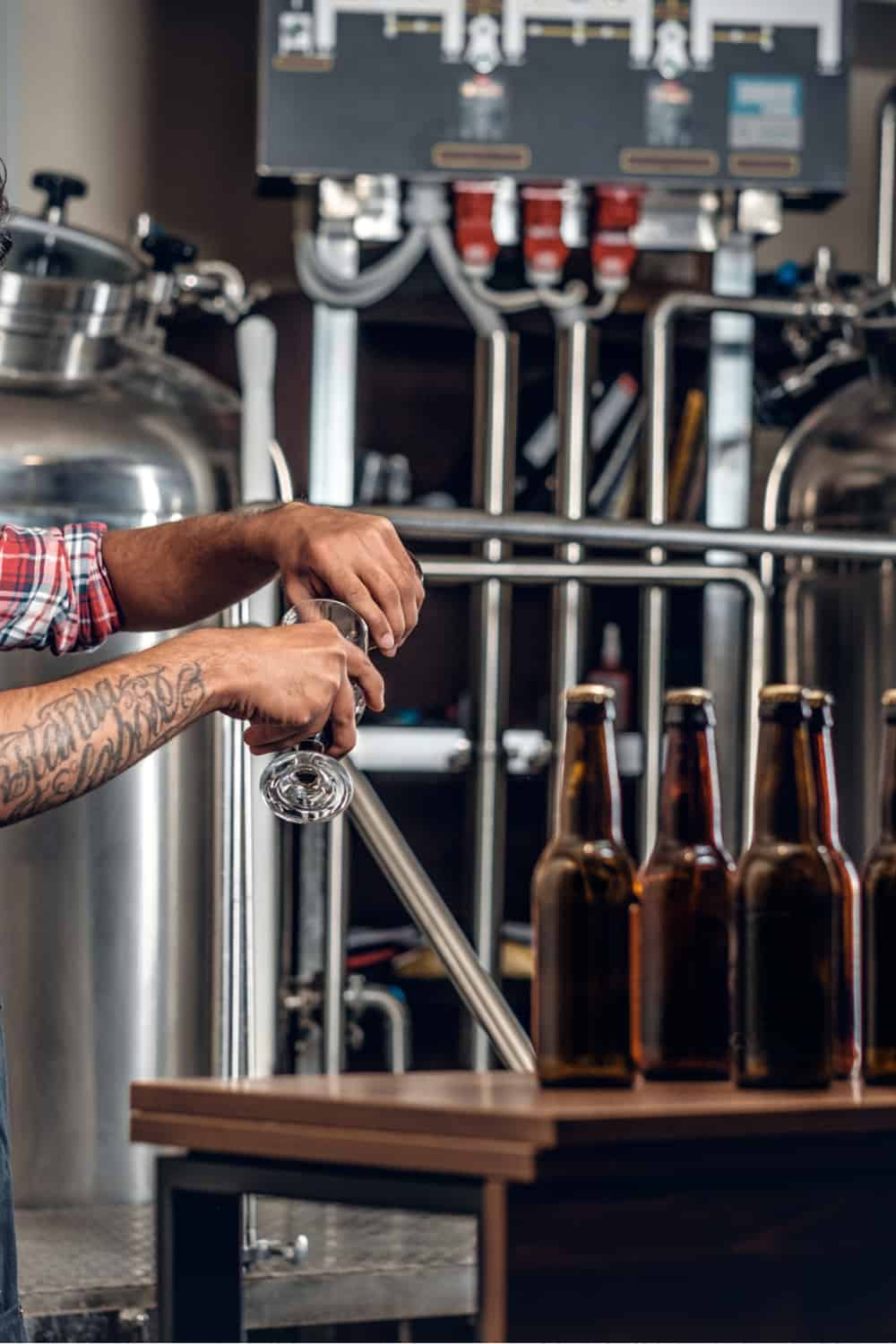The burgeoning craft beer movement is already more than a couple of decades old, and one of the most popular styles that has help drive and sustain it is the IPA, the hop explosion that developed from a beer first brewed in 19th-century England.
The IPA has become such a fixture of the craft beer scene that’s it’s now considered more of a staple than something fresh and exciting. But craft brewing is all about challenging expectations and searching for the Next Big Thing, something that has given rise to an irreverent child of Indian Pale Ale, the hazy IPA.
Loved and loathed in equal measures, this is a beer that divides purists and casual drinkers alike – so here, we discuss the question of what is a hazy IPA?
If you want a preview of some of the stuff we’re going to be talking about, you can also check out this video before reading on.
What is a Hazy IPA?
A hazy IPA is easy to recognize due to its cloudy nature – which, unsurprisingly, is why it is so named. There are many takes on this relative newcomer to the craft beer scene, but something they all share is haziness.
The other part of the name is a giveaway, too. Hazy IPAs are IPAs – and as such, the most prominent feature of their flavor profile is hoppiness.
That said, another sought-after characteristic of hazy IPAs is fruitiness, often coming closer to the flavor of an orange juice than a traditional IPA. The turbid nature of the drink also tends to take the edge off the more extreme hoppiness of a regular IPA, making them a more accessible option for those who don’t ordinarily enjoy IPA.
In the world of craft beer aficionados – and beer snobs – these facts alone are enough to stir up plenty of acrimonious controversies, but we’re getting ahead of ourselves.
Before we even begin to talk about any of that, let’s give ourselves a little history lesson to remind ourselves where the hazy IPA came from in the first place.
A bit of beer history

The story of IPA starts in 17th-century England when people began using coke to dry-roast malt. This lightly roasted malt produced a paler style of beer that, by the turn of the century had acquired the name “pale ale”.
At some point, a more generously hopped version of pale ale was produced that proved popular with traders exporting beer to England’s most prized colonial possession, India.
It was found that the extra hops helped the beer survive the long sea voyage, which could take up to six months – and not only that, it was discovered that the time at sea actually seemed to improve the beer.
Whether the extra hops were put into the beer deliberately to make it easier to transport to India or whether it was just a fortuitous discovery is still debated (it was probably the latter), but for our present purposes, it doesn’t matter.
What matters is that this strongly hopped type of pale ale was shipped to India in increasing quantities, quickly becoming known as India Pale Ale – or IPA.
Subsequently, demand for this new kind of beer grew throughout the British Empire, including back in England itself – and it enjoyed considerable popularity right up to the First World War.
IPA and the American craft beer revolution

Following the war, IPA went into decline in the UK. It never completely disappeared, but it became more of a niche drink than a mainstream tipple.
However, by the 1970s, it began to undergo a renaissance on both sides of the Atlantic. A growing appreciation of Real Ale in Britain saw a resurgence in IPA’s popularity while in the US, the nascent craft beer movement saw brewers taking a new interest in older, largely forgotten styles of beer.
And IPA was a beer that American craft brewers found particularly suited their ethos of experimentation and innovation.
They began brewing IPAs using American hops rather than traditional European ones, something that imparts a much more fruity, citrus flavor to the beer, and IPA quickly established itself as the darling of the craft beer world.
America’s love affair with hops had begun.
A new style of IPA hits the scene
The American IPA pioneers were located on the West Coast, and for this reason, the dominant style of American IPA – quite distinct from its Anglo-Indian progenitor – came to be known as West Coast IPA.
It is characterized by a strong hoppiness and usually – but not always – a higher ABV than many other beers, usually in the 5.5-7.5% range and sometimes higher.
However, the hops explosion of a West Coast IPA – and the hops nuclear blast of its other unruly offspring, the double IPA – may be too much for the palates of some, which leaves space for something a little mellower. Enter the hazy IPA.
The first brewers to come up with something we would recognize as hazy IPA hailed form Vermont – which is why this style is also known as New England IPA – but these creative brewers weren’t trying to invent a cloudy beer.
They were trying to produce something with a gentler hoppy flavor and plenty of fruitiness, and the opaque aspect of the beer, the characteristic for which it has since become known, was a side effect the brewing process rather than the aim.
Where does the haze come from?

Without going too deep into the science and art of brewing, there are a few reasons why beers can be cloudy.
With hazy IPA, this cloudiness comes from colloidal haze from dry hopping – which means adding extra hops after the yeast has taken care of fermentation.
This is done mainly to add aroma to the beer, but it also adds particulate matter which remains suspended in the liquid, creating haze.
Part of the cloudiness also comes from what is known as “low-flocculating yeast”. This is yeast that doesn’t clump together, rise to the top or sink to the bottom, something else that also contributes to the hazy appearance.
If you want to know more about the long version of the science behind the haziness, check out this video for more info.
Often, turbid beers like this are filtered, but brewers making hazy IPAs claim that this would alter the flavor profile, making the beer more overtly hoppy and less fruity – in short, much more like a regular IPA.
Another way of saying this is that if you filter a hazy IPA, it’s no longer a hazy IPA, but not because it loses its haziness – it’s because it doesn’t taste like one anymore.
The hazy IPA controversy
Now we get to the part where opinion is divided: for some, they’re the sourdough of the beer world; for others, they’re an abomination, a “beer” for people who don’t like drinking beer.
The problem is, they can be so fruity that some purists argue they don’t taste like beer at all. This leads detractors to ask, if you like orange juice, why not just drink orange juice? Why do you need to drink a beer that tastes like orange juice?
Perhaps this comes down to individual taste, but it also depends on the beer.
A hazy IPA should be well balanced, and “balance” is the key word. The flavor should be complex enough to take you on a journey, allowing you to explore the different flavors contained within each sip and within each glass.
This is what a good hazy IPA can do, but a less refined one may be very one-dimensional and uninspiring. So basically, more like drinking a glass of OJ, and that’s never going to win any plaudits with the connoisseurs.
But then if your palate isn’t accustomed to beer and you hate regular IPA but love your hazy, who are the beer snobs to tell you you can’t drink it?
Adding flour to beer?

The second accusation leveled at hazy IPA is that brewers have lost sight of the original concept and are chasing haziness in itself, promoting the cloudy appearance above any other characteristics.
As one of the hottest craft beer styles of the moment – and one that is eminently Instagramable – some brewers have sought to cash in on the coolness factor of the beer while allowing the taste to become more of an afterthought.
In some cases, brewers have even begun adding questionable ingredients – overtly or surreptitiously – to increase the opacity of their brew.
And when it comes to the point of adding things like flour to make beer murkier, many draw the line.
Beer is supposed to be a drink, and brewing it is an art – but the art is in producing a complex and balanced brew full of subtle flavors, not in producing a turbid but photogenic glass of liquid that just looks good on social media.
At least so the argument goes. We’ll let you decide.
A brew worth trying
Hazy IPA is a relative newcomer to the scene, and as such, its brewers are still finding their feet. It was only recognized as a distinct style by the Brewers Association as recently as 2018, so it is unsurprising that there are still many bad ones – along with a few good ones too.
Our advice is to try a selection before passing judgment since the first one to pass your lips may not be the finest example. However, hazy IPA certainly has its fans – as well as many converts from among the more skeptical – so try to keep an open mind until you’ve sampled enough to judge fairly.